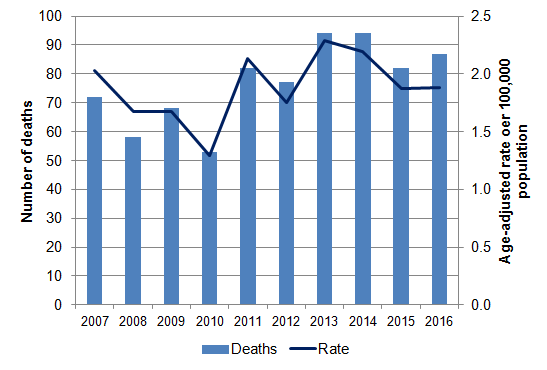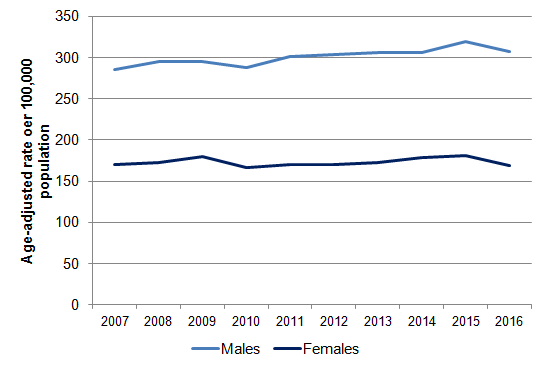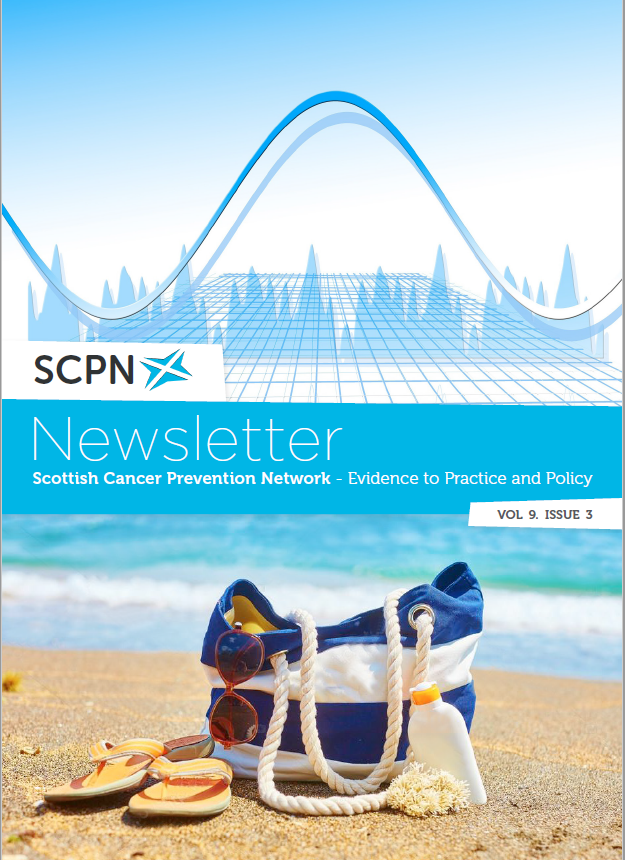
Spotlight on Scottish Non-Melanoma Skin Cancer

10 Jul 18 |
It is often thought that skin cancer is uncommon because we don’t see the statistics. In fact skin cancer is the most common cancer in Scotland largely due to UV exposure – not usually deadly but not desirable. We asked Andrew Deas, Information Services Division, NHS National Services Scotland to tell us more.
Recording of nonmelanoma skin cancer
Non-melanoma skin cancer is one of the most common cancers in the world and the most commonly diagnosed type of cancer in Scotland
and the rest of the UK. However, recording practices vary for non-melanoma skin cancer in cancer registries around the world. Some
registries do not record it at all, while others attempt to record all cases. The Scottish Cancer Registry aims to record the first occurrence
of basal cell carcinoma (the most common form of nonmelanoma skin cancer) in each person and all cases of squamous cell carcinoma.
As a result of these differences around the world, it is common practice to exclude non-melanoma skin cancer from statistics for “all cancers
combined”. This ensures that statistics are comparable with those of other countries. ISD do publish statistics on nonmelanoma skin cancer, however, along with those on malignant melanoma of the skin.
Incidence (1)
The main risk factor for skin cancer is exposure to ultra-violet radiation, either from the sun or from sun-beds. Although non-melanoma skin cancers are rarely fatal, they represent a significant workload for the health service. Much of the treatment for non-melanoma
skin cancer can be given in an outpatient or GP surgery setting. In 2016, 11,677 cases of non-melanoma skin cancer were recorded by the Scottish Cancer Registry. This is over a quarter of all cancers diagnosed in Scotland in 2016 and almost 90% of all skin cancers. In comparison, the next most common type of cancer in Scotland is lung cancer, of which 5,045 cases were diagnosed in 2016. Around 70% of the nonmelanoma skin cancers diagnosed in 2016 were basal cell carcinomas. This affects the cells at the bottom of the outer layer of the skin (the epidermis).
Basal cell carcinoma does not usually spread to other parts of the body and rarely causes death. Squamous cell carcinomas formed 29% of
cases in 2016. This affects the cells lining the top of the epidermis. There is a small risk (between 2-5%) of squamous cell carcinoma spreading to other parts of the body (usually the lymph nodes)(4). The remaining 1% were other specified and unspecified types of carcinoma.
Nearly three-quarters of cases diagnosed in 2016 were in people aged 65 and over. Nearly three-fifths of cases are diagnosed in men (6,831
cases diagnosed in men and 4,846 cases in women). The age-adjusted incidence rate in men is nearly double that of women (figure 1).

Figure 1. Non-melanoma skin cancer, age-adjusted incidence rates in Scotland by sex, 2006-2015.
Mortality, survival and prevalence (2, 3)
Survival for non-melanoma skin cancer is generally very good. Deaths from nonmelanoma skin cancer are relatively rare in comparison
to the number of cases that are diagnosed. In 2016, 87 people died from nonmelanoma skin cancer (figure 2). In comparison, 162
people died from malignant melanoma of the skin.
As the incidence of nonmelanoma skin cancer is so high and mortality is so low, the number of people who have survived is large. It is estimated that there are over 100,000 people in Scotland who have been diagnosed with nonmelanoma skin cancer and who were still alive at the end of 2016.

Figure 2. Non-melanoma skin cancer, number of deaths and age-adjusted mortality rate in Scotland, 2007-2016
Further Information
All statistics are based on publications on the ISD website:
1. https://www.isdscotland.org/Health-Topics/Cancer/Publications/2018-04-24/i_cancer_skin.xls
2. https://www.isdscotland.org/Health-Topics/Cancer/Publications/2017-10-31/m_cancer_skin.xls
3. https://www.isdscotland.org/Health-Topics/Cancer/Publications/2017-04-25/p_cancer_skin.xls
4. https://www.nhsinform.scot/illnesses-and-conditions/cancer/cancer-types-in-adults/skin-cancer-nonmelanoma
Acknowledgement
Our publications use data shared by patients and collected by the NHS as part of their care and support.
